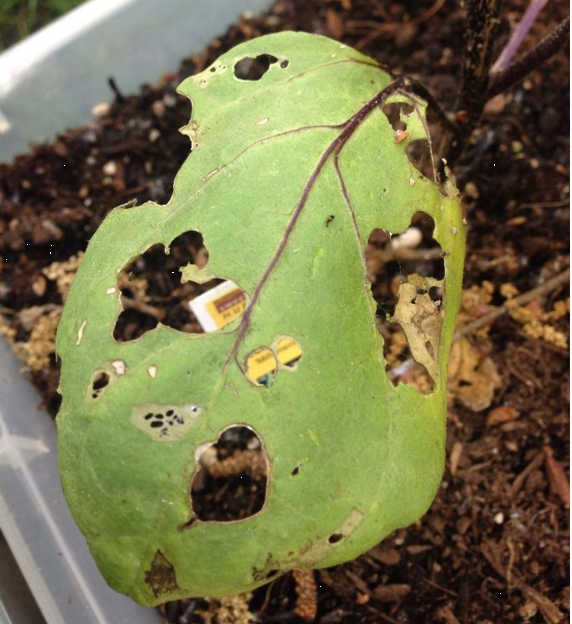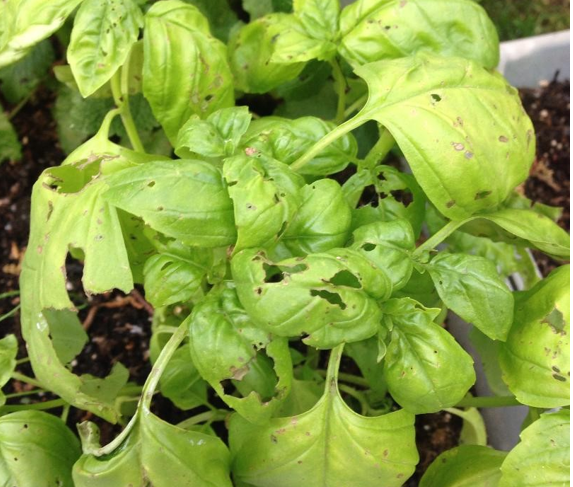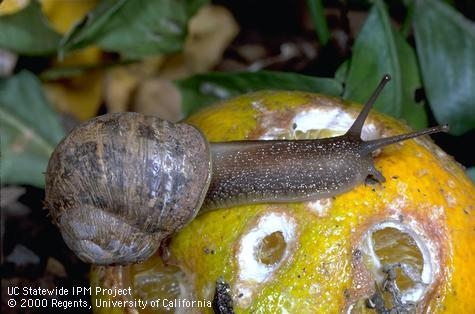Advice for the Home Gardener from the Help Desk of the
UC Master Gardener Program of Contra Costa County
Client's Request: Hello. I'm looking for some help on what is eating leaves on my vegetable plants, and what may I do to help remediate. Below are some pictures.


MGCC Help Desk Response: Thank you for contacting the UC Master Gardener Program Help desk.
It is very hard to determine exactly what is causing holes in the leaves of your plants without direct observation. However, I think it may be slugs and/or snails, a common problem in spring. In order to determine if it is slugs or snails to implement an effective removal effort, you could look for slime on the leaves and slime on the ground around the plants. You could also go out at night with a flash light when they are active and check the leaves for snails and slugs.
The link following will take you to a UC Pest Management page on slugs and snails. It has some really nice videos (which are not long) on identifying whether or not slugs and snails are eating your plants. It also has a video on pest management of the slugs/snails (what to do about them). The pest note also has written information on management of snails and slugs. http://ipm.ucanr.edu/PMG/PESTNOTES/pn7427.html.
Managing snails and slugs can be done with trapping or hand picking and then snail and slug bait.


As you should always do when using pesticides, read the label on the snail bait box for use and cautions. The active ingredients that are in the snail/slug bait are in small print on the package. Metaldehyde and sodium ferric EDTA can be toxic to animals and harmful to the environment. Iron phosphate is safe for animals. The bait should be shaken around the plants.
It may also be cutworm. Management of this pest involves hand picking at night and protecting plants with cardboard collars, screens or protective cloth. The link following will take you to the UC Pest Management page on cutworms. http://ipm.ucanr.edu/PMG/GARDEN/VEGES/PESTS/cutworm.html
Finally, from my personal experience to reduce the snail/cutworm population, look for and destroy their daytime hiding places (e.g., wood debris, weeds, etc.). It's a lot easier than crawling around at night with a flashlight looking for them.
Please let us know if you have further questions.
Help Desk of the UC Master Gardener Program of Contra Costa County (DLD)
Note: The UC Master Gardeners Program of Contra Costa's Help Desk is available year-round to answer our gardening questions. Except for a few holidays, we're open every week, Monday through Thursday for walk-ins from 9:00 am to Noon at 75 Santa Barbara Road, 2d Floor, Pleasant Hill, CA 94523, although we will be moving this spring. We will notify you if/when that occurs. We can also be reached via telephone: (925)646-6586, email: ccmg@ucanr.edu, or on the web at http://ccmg.ucanr.edu/Ask_Us/ MGCC Blogs can be found at http://ccmg.ucanr.edu/HortCoCo/ You can also subscribe to the Blog (//ucanr.edu/blogs/CCMGBlog/)